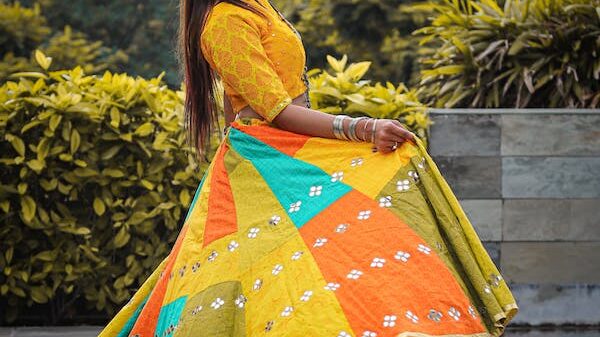Are you tired of constantly buying clothes that fall apart after just a few wears? Are you concerned with the environmental impact of fast fashion? It’s time to consider switching to slow fashion. Not only does investing in quality pieces save you money in the long run, but it also reduces waste and supports ethical production practices. In this blog post, we’ll explore the benefits of slow fashion and why it’s worth making the switch. Get ready to transform your wardrobe and make a positive impact on our planet!
What is Slow Fashion?
Slow fashion is a movement that is gaining popularity in the fashion industry. It is based on the principle of investing in quality over quantity. This means purchasing fewer, better-made items that will last longer, as opposed to buying lots of cheap clothes that will quickly fall apart.
There are many benefits to slow fashion. For one, it helps to reduce waste. The fast fashion industry is notorious for producing a lot of clothing that ends up in landfill sites. By investing in higher quality items, you are more likely to keep them for longer and avoid contributing to this problem.
Slow fashion is also better for the environment. The fast fashion industry has a huge ecological footprint, due to the large amount of energy and water required to produce its products. Slow fashion supports sustainable practices such as using organic materials and local production, which have a lower impact on the planet.
Lastly, slow fashion is great for your wardrobe! With fewer but better-made items, you can create a capsule wardrobe that is stylish and versatile. You’ll save money in the long run, and you’ll always have something to wear that you feel good in.
Benefits of Slow Fashion
There are many benefits to slow fashion, including investing in quality and reducing waste.
Slow fashion is all about quality over quantity. It’s about taking the time to find well-made pieces that will last you for years, rather than buying cheaply made items that will fall apart after a few wears. When you invest in quality, you end up spending less in the long run because you don’t have to keep replacing your clothes.
Additionally, slow fashion is more sustainable than fast fashion. Fast fashion is one of the most polluting industries in the world, and it’s also responsible for a lot of waste. Every year, billions of pounds of clothes end up in landfills. By contrast, slow fashion is much more gentle on the environment. When you buy fewer, better-made pieces, you help reduce pollution and waste.
Investing in Quality Clothing
In a world where cheap, fast fashion is the norm, it’s easy to forget the value of investing in quality clothing. But there are many benefits to be gained from slowing down and considering the clothes we buy more carefully.
For starters, higher-quality garments are built to last longer. This means you can keep them in your wardrobe for years, or even decades, rather than seeing them fall apart after just a few wears like cheaper items often do. Not only does this save you money in the long run, but it also reduces the amount of textile waste ending up in landfill.
It’s also worth considering the ethical implications of our clothing choices. The majority of fast fashion is produced in sweatshops by underpaid workers, whereas Slow Fashion brands are much more likely to have ethical production practices. So when you invest in quality clothing, you can feel good knowing that your purchase has supported fair working conditions and labour rights.
Finally, slow fashion is simply better for the environment overall. The methods used to produce mass-produced clothing quickly and cheaply are extremely damaging to both air and water quality. Slowing down our consumption habits and choosing eco-friendly materials helps to mitigate these impacts and protect our planet for future generations.
Sustainable Materials and Production Methods
Slow fashion is an approach to fashion that emphasizes quality over quantity. It is about investing in well-made clothing that will last for years, rather than following the latest trends.
There are many benefits to slow fashion, including reducing waste, supporting local economies, and promoting fair working conditions.
Sustainable materials and production methods are a key part of slow fashion. Sustainable materials are those that have a low impact on the environment, such as organic cotton or bamboo. Production methods should be safe for workers and gentle on the earth.
When you buy slow fashion, you can be sure that you are supporting sustainable practices. This means that your clothing will have a smaller carbon footprint and will not contribute to pollution or climate change. Additionally, buying from independent designers or small businesses helps to support local economies.
Finally, by choosing slow fashion over fast fashion, you are helping to promote fair working conditions. The workers who make our clothes should be paid a living wage and treated with respect. Unfortunately, this is not always the case in the fashion industry. But when you buy from brands that adhere to fair trade principles, you can rest assured that the people who made your clothes were treated fairly.
Reducing Waste Through Upcycling and Recycling
We all know the feeling of buyer’s remorse – that twinge of regret after making a purchase, often driven by the fear that we made a bad investment. When it comes to clothing, this feeling can be amplified by the guilt associated with fast fashion. Fast fashion is the term used to describe the current trend of designing, producing, and selling mass-produced clothing at affordable prices. This business model has been greatly criticized for its negative impact on both people and the environment.
On the people front, fast fashion relies on an army of underpaid and often mistreated workers in developing countries. In fact, the Rana Plaza factory collapse in 2013 – which killed over 1,100 garment workers in Bangladesh – brought international attention to the poor working conditions in the fast fashion industry.
How to Shop Responsibly and Ethically
In an age of ever-growing consumerism, it’s more important than ever to shop responsibly and ethically. But what does that mean, exactly? Here are a few tips:
1. Do your research: Before you buy anything, take some time to research the company and their manufacturing practices. Make sure they treat their workers fairly and pay them a living wage.
2. Buy quality over quantity. When you invest in higher quality items, you’ll end up saving money in the long run because you won’t have to replace them as often. Plus, you’ll be supporting sustainable fashion brands that are making an effort to reduce waste and use ethical manufacturing practices.
3. Shop secondhand when possible. One of the best ways to reduce waste is to shop secondhand or vintage clothing instead of buying new items. Not only will you find unique pieces, but you’ll also be giving clothes a second life instead of sending them straight to the landfill.
Alternatives to Fast Fashion Brands
There are many reasons to avoid fast fashion brands. They often produce poor-quality clothing that falls apart quickly, contributing to the growing problem of textile waste. Additionally, the working conditions in fast fashion factories are often deplorable, with employees facing long hours, low pay, and dangerous conditions.
Fortunately, there are many alternatives to fast fashion brands. There is a growing movement of slow fashion brands that focus on producing high-quality garments that will last for years. These brands also typically have better working conditions for their employees and are more environmentally sustainable.
Conclusion
Slow fashion is a great way to invest in quality clothing while reducing waste. While it may cost more upfront, the long-term savings and environmental benefits are undeniable. By investing in timeless pieces that will last for years, you’re helping to reduce the amount of clothing that ends up in landfills or being incinerated.










